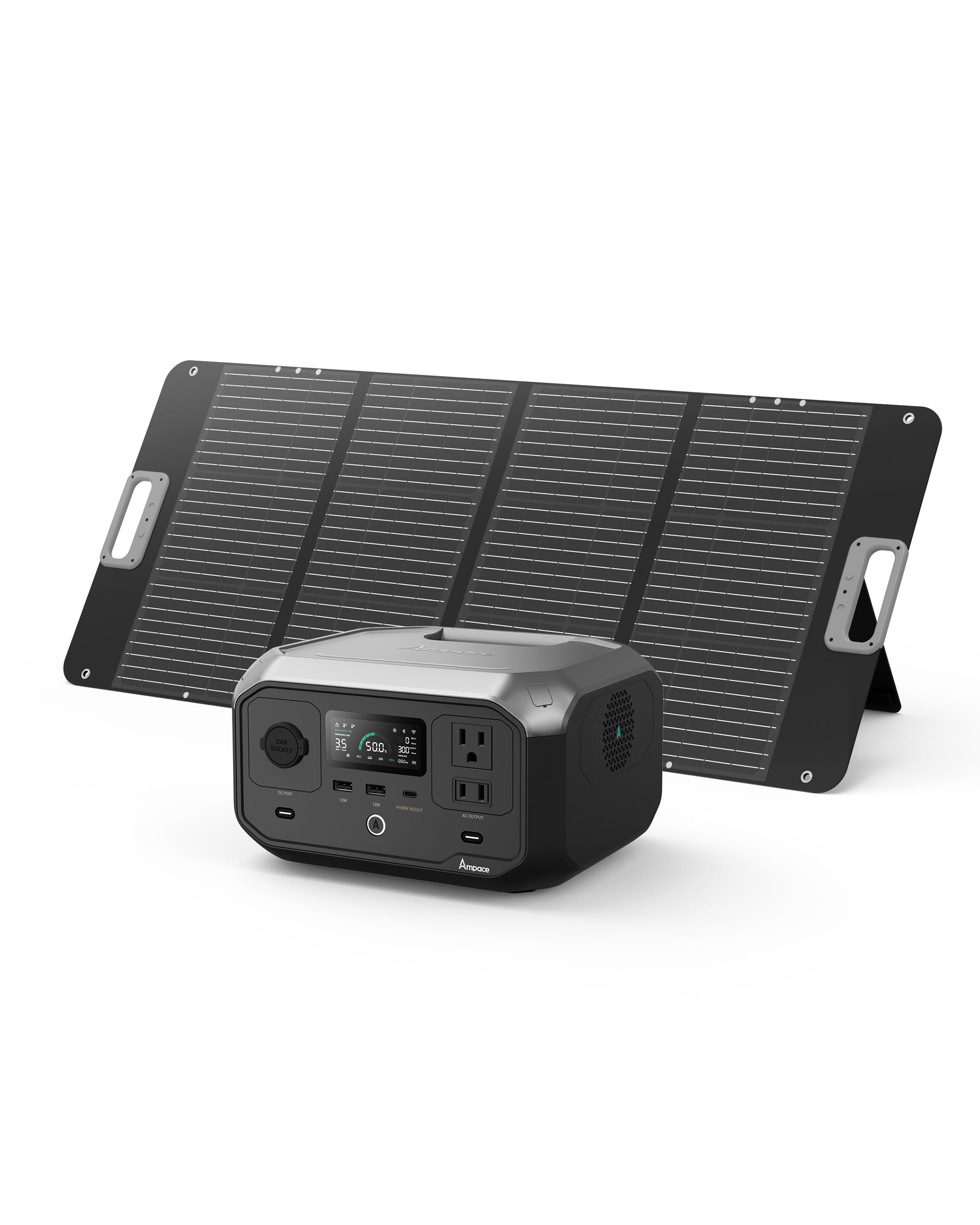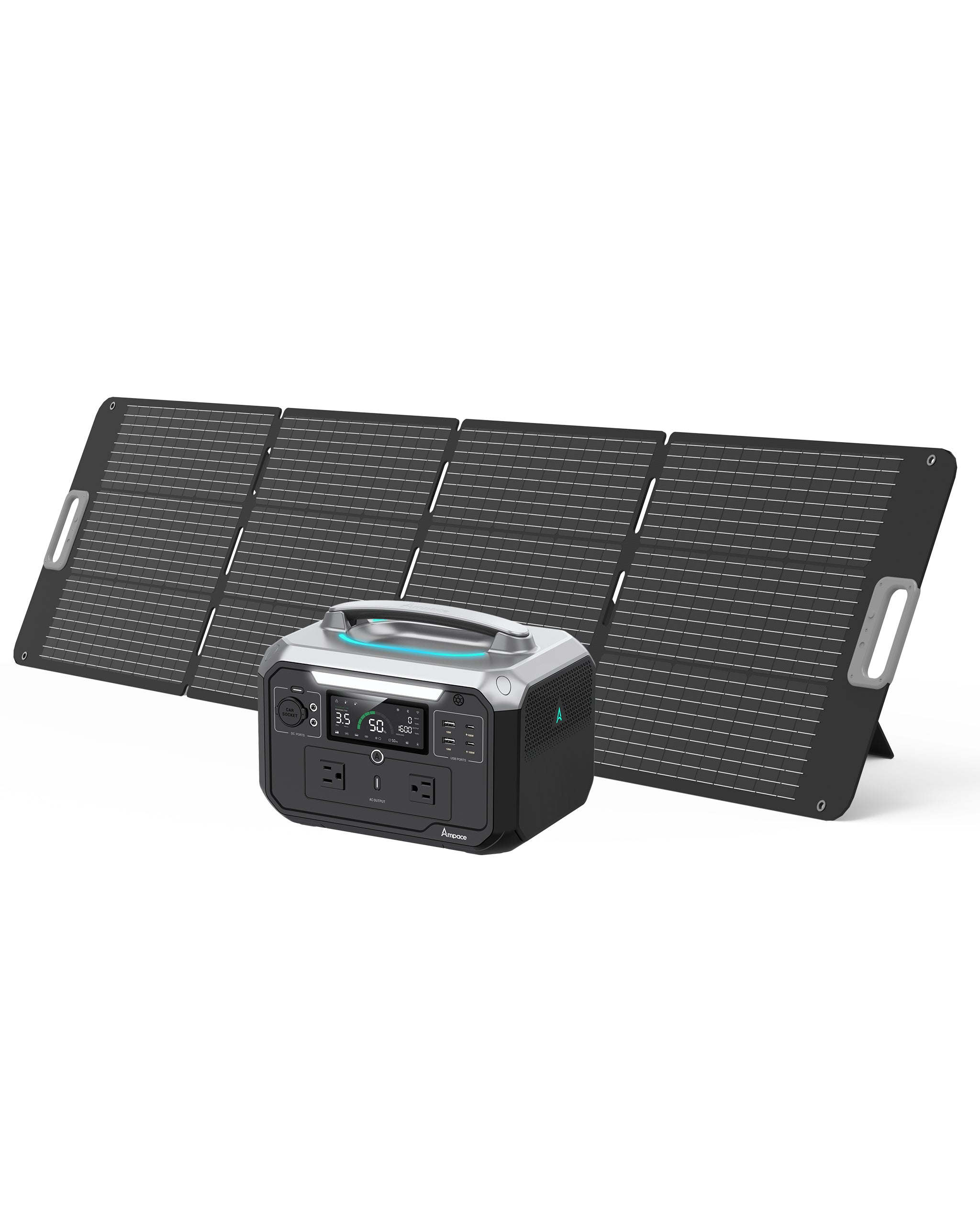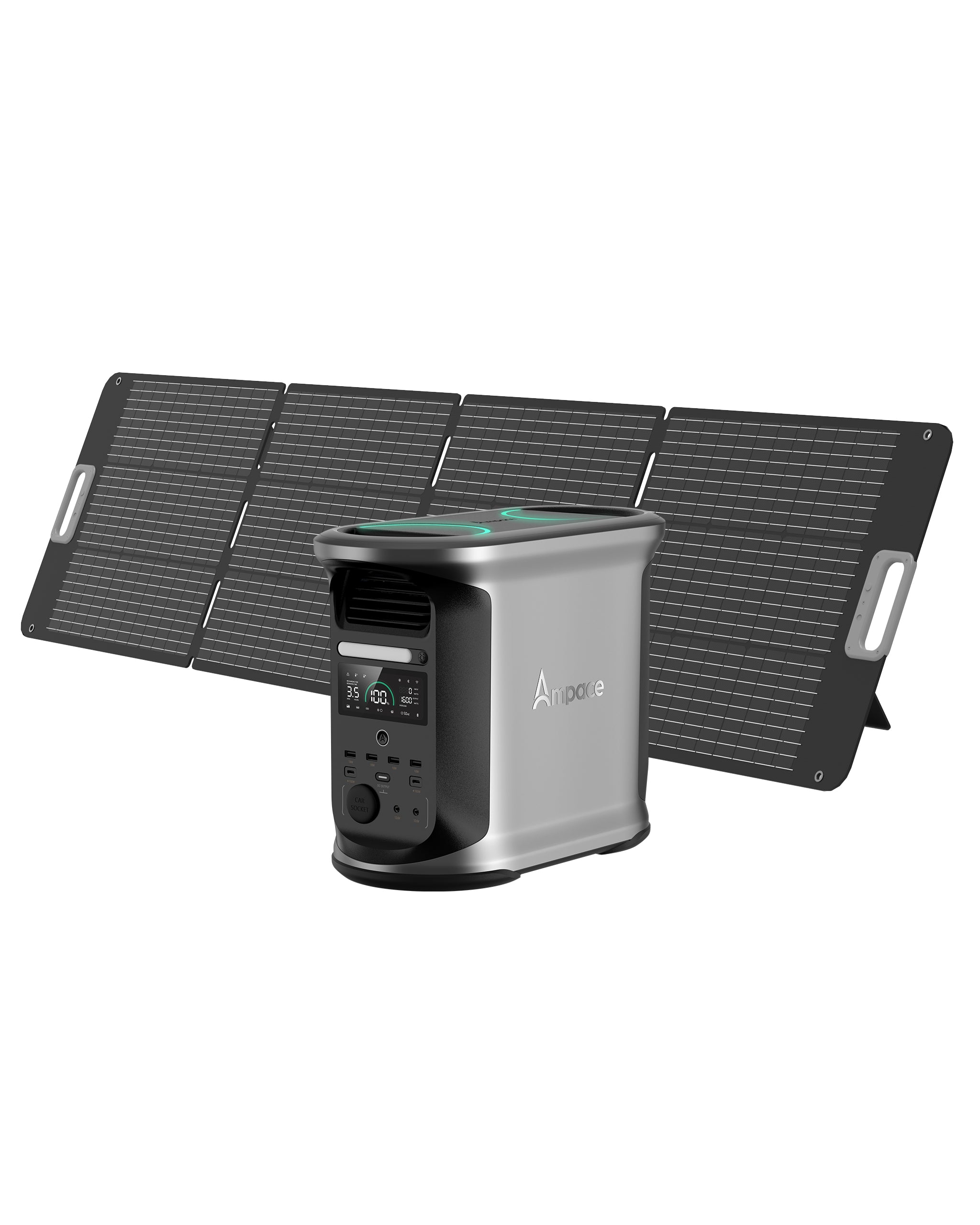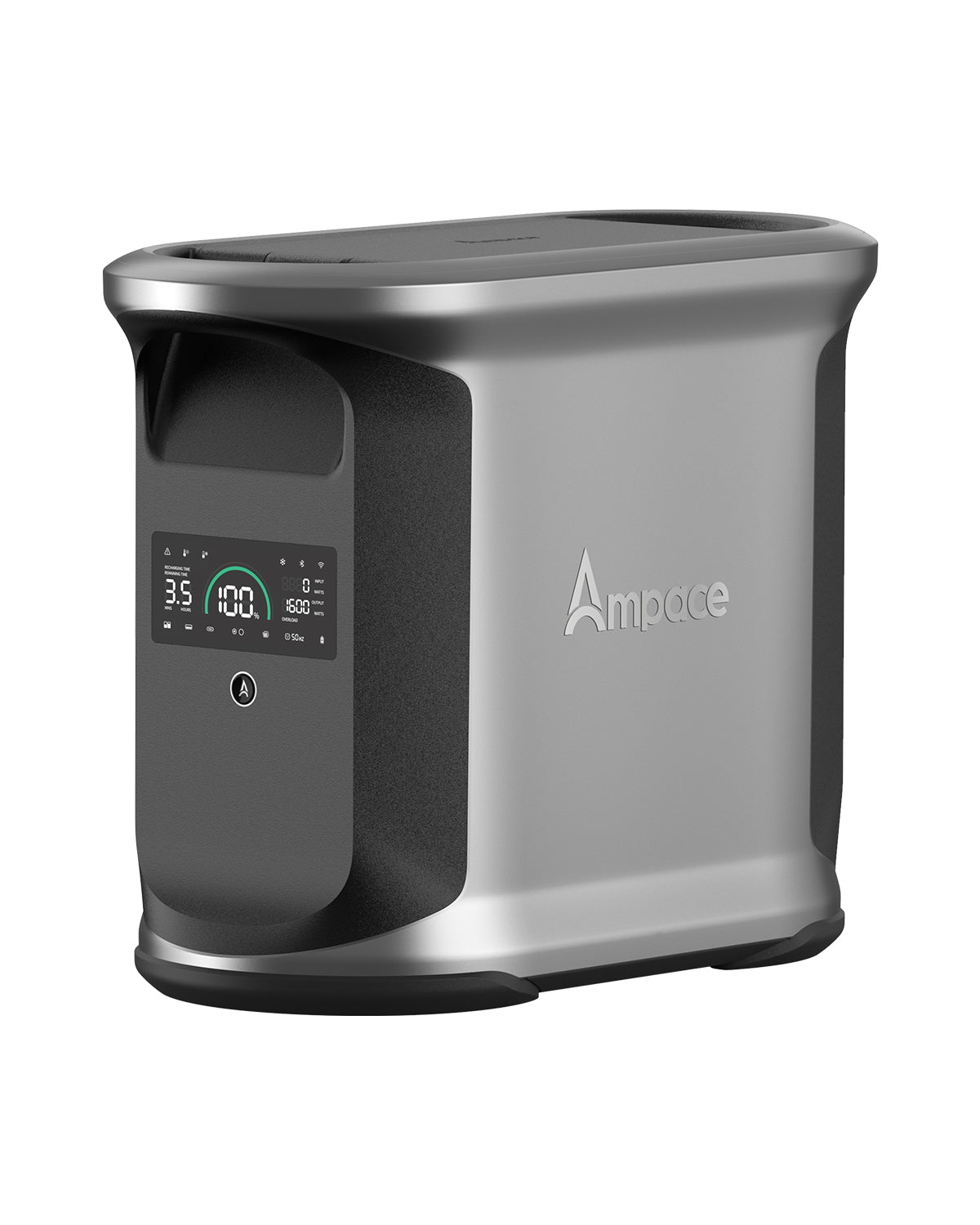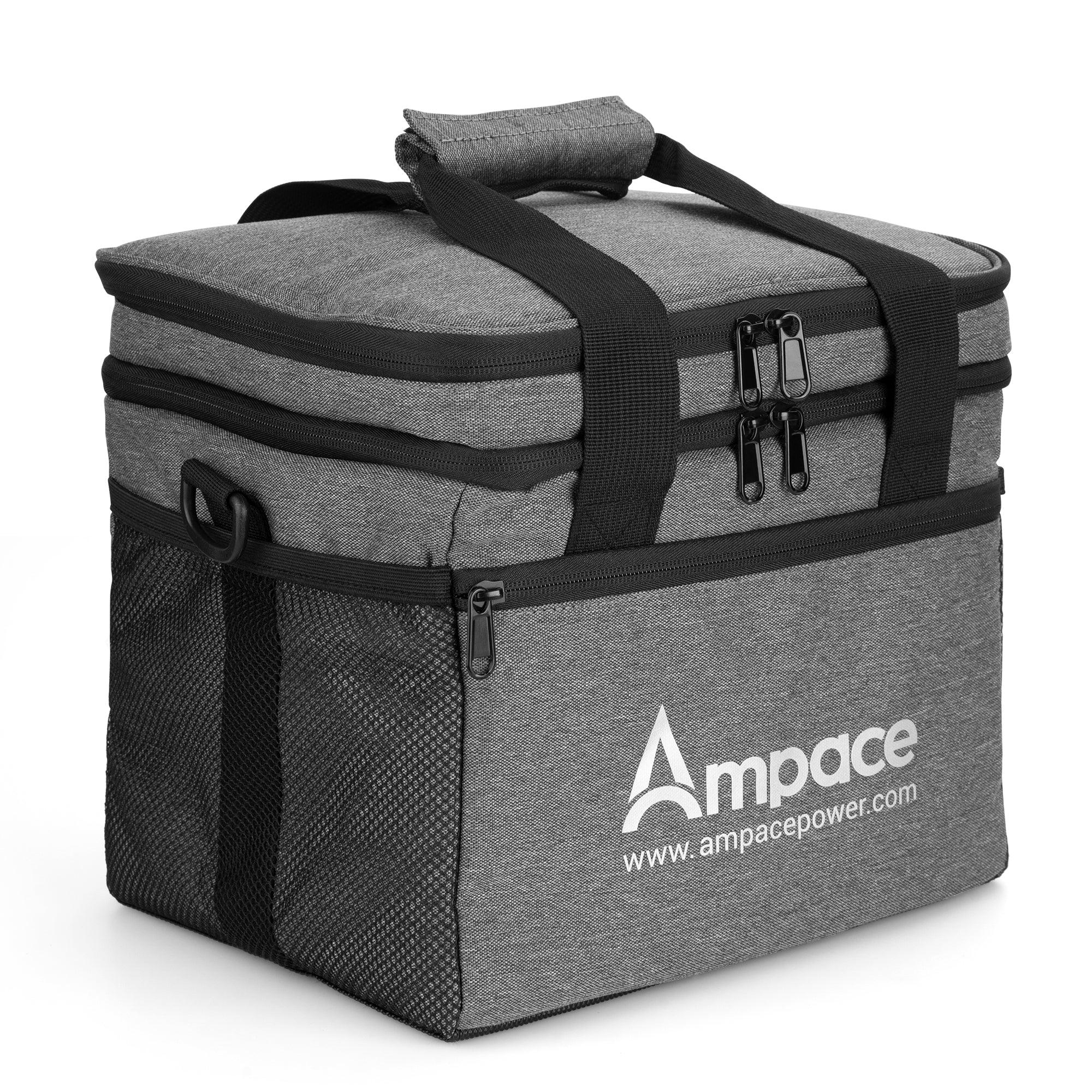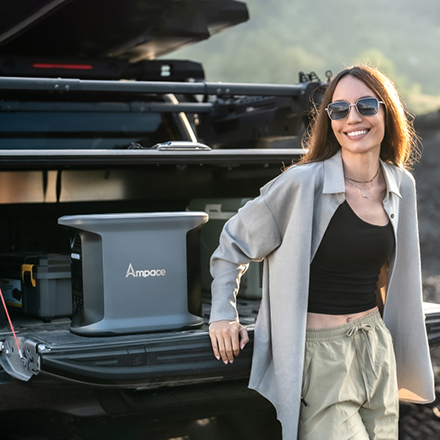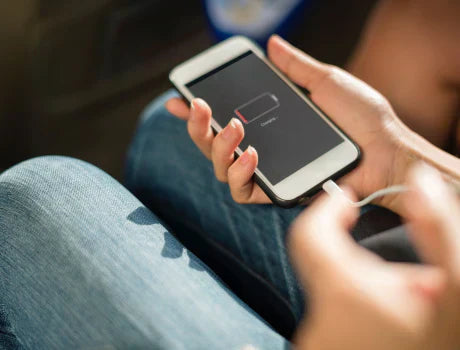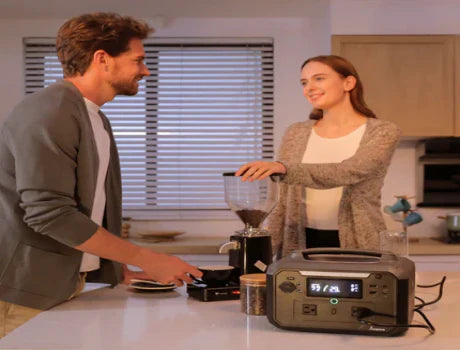Complete Emergency Power Guide for Medical Needs: Beyond CPAP Machines
Imagine this scenario: the wind howls like a banshee, rain lashes against the windows, and the TV news ominously warns of a looming hurricane. Then, without a moment's notice, a sudden, unnerving silence descends as the power grid fails. For many, a power outage during hurricane season in the U.S. means a scramble for flashlights and a cold dinner. But for millions of Americans, especially those living in vulnerable coastal regions, losing electricity signifies an immediate and profound threat to their very health and well-being.
When the grid goes dark, it's about much more than just keeping your phone charged or preventing ice cream from melting. For individuals relying on crucial medical equipment, an extended power loss isn't merely an inconvenience; it becomes a critical, life-threatening emergency. We’re talking about devices that maintain breathing, regulate body functions, or keep vital medications viable. It’s a situation where minutes can literally matter. This comprehensive guide will walk you through everything you need to know about securing a reliable emergency power supply for all your essential medical needs during severe weather events.
The Silent Threat – Understanding Medical Device Dependency in a Power Outage
The danger of a power outage for someone with medical needs is often overlooked by those who don't face such challenges daily. It's a silent threat, creeping in with the loss of every essential hum and whir of life-sustaining machinery.
Why Power is Life-Saving for Various Medical Needs
While the CPAP machine is probably the most commonly recognized power-dependent medical device, the spectrum of critical equipment is far wider. For sleep apnea patients, a continuous positive airway pressure (CPAP) machine ensures open airways, preventing potentially fatal breathing interruptions during sleep. Without power, that lifeline is severed.
But let's think beyond the CPAP:
- Oxygen Concentrators: These devices provide essential oxygen therapy. For individuals with severe respiratory conditions, the immediate danger of a power loss to an oxygen concentrator cannot be overstated. It's a matter of immediate breath.
- Nebulizers: Used to administer medication in mist form for conditions like asthma or COPD, these also require power. A flare-up during an outage without a working nebulizer can quickly escalate.
- Ventilators: For those on life-support systems, a ventilator provides mechanical assistance for breathing. Powering such a device is not just crucial; it's absolutely non-negotiable for survival.
- Insulin and Other Refrigerated Medications: Many life-saving medications, including insulin, certain antibiotics, and biological drugs, require constant refrigeration. Fluctuations in temperature can render them ineffective or even dangerous. The simple act of keeping your refrigerator running becomes a critical medical task.
- Mobility & Support Devices: Electric wheelchairs, scooters, feeding pumps, lift chairs, and even hearing aid chargers are all dependent on electricity. Losing power can mean losing mobility, access to nutrition, or essential communication capabilities.
The risks associated with power loss for these devices are profound: rapid health deterioration, spoilage of vital medications, and a significant loss of independence or access to basic care. A thorough understanding of these dependencies forms the bedrock of any effective emergency plan.
Assessing Your Vulnerability: The Medical Power Audit
Just as we might conduct a home energy audit to save money, a "medical power audit" focuses on saving lives. This isn't merely about convenience; it's about survival. You need to create a detailed, meticulous list of all medical equipment your household relies on, no matter how small it may seem.
For each piece of equipment, note down:
- Running Watts: This is the continuous power the device consumes while actively operating. (e.g., a CPAP machine might use 30-60 watts).
- Starting Watts (or Surge Watts): For devices with motors (like some oxygen concentrators or nebulizers), there's a brief, higher power draw when they first turn on. Your emergency power source must be able to handle this momentary surge.
- Daily Usage Hours: How many hours a day does each device typically run? This is crucial for calculating your total daily energy consumption in watt-hours (Wh). For instance, a 60-watt CPAP used for 8 hours needs 480 Wh (60W x 8h).
- Backup Needs: This is the most critical issue. How many hours or, more realistically, how many days of power do you absolutely need to sustain these devices safely? During a major hurricane, power could be out for days, even weeks. Plan at least 3-7 days of sustained power for critical medical devices.
This detailed inventory helps you understand the scale of your power needs, guiding you toward the correct emergency power supply solution.
Choosing Your Lifeline – Emergency Power for Medical Equipment
With your medical power audit complete, the next crucial step is to select the right emergency power for medical equipment. This decision is paramount, and it’s where safety, reliability, and functionality intersect.
The Quest for a Reliable Emergency Power Supply
When selecting an emergency power supply, especially for sensitive medical devices, compromise isn't an option. You need a system that's not only powerful enough but also safe for indoor use and capable of delivering clean, stable electricity. The hum of a generator might seem reassuring, but its fumes can be deadly if not handled correctly.
The Clean & Safe Choice: No-Fume Emergency Power Source Options
For indoor use, particularly when dealing with respiratory equipment or sensitive electronics, a no-fume emergency power source is the only safe and responsible choice.
Solar Generators Pros and Cons (Portable Power Stations with Solar Panels):
Pros:
- These are rapidly becoming the go-to solution for medical backup.
- They operate silently, produce zero harmful fumes, making them perfectly safe for indoor use, even right next to a bed.
- They recharge using renewable solar energy, offering true independence, and require minimal maintenance.
Cons:
- Their primary limitation is their reliance on sunlight for recharging.
- During prolonged cloudy periods or intense storms (like a hurricane!), their charging efficiency will be severely impacted.
- The upfront cost can also be higher than a traditional generator, and their capacity might be limited for very high-draw devices if not sized appropriately.
Ideal Use:
Perfectly suited for continuous-run devices like CPAP machines, most oxygen concentrators (though ensure sufficient capacity for longer runtimes), and keeping smaller medical devices charged. They can also help power a refrigerator with careful use (more on that later). Ampace Power offers a range of robust, no-fume solar generators designed for reliable backup.
Battery Backup Systems (UPS/Portable Power Stations):
Pros:
- Many portable power stations function as a powerful, large-capacity battery backup.
- Uninterruptible Power Supplies (UPS) provide virtually instantaneous power transfer, preventing any disruption to sensitive equipment.
- Like solar generators, they are completely silent and produce no fumes, making them safe for any indoor environment.
- Their portability means you can easily move them to where they're needed most.
Cons:
- They are limited by their stored charge.
- Once depleted, they require recharging from a grid connection (if power returns), solar panels, or a traditional generator.
- Higher capacity units can be heavy, but typically offer wheels or handles for easier movement.
Best Use:
Ideal for critical short-term needs, bridging the gap until primary power returns, or providing continuous power for smaller, sensitive loads without any interruption. Think of them as your immediate, silent guardian against outages.
-
Inverters with Car Batteries: In desperate situations, some might consider using a power inverter connected to a car battery. While technically feasible for very short-term, low-power needs, this is a less ideal and riskier solution. Car batteries aren't designed for deep cycling (repeatedly discharging deeply), which can quickly damage them. Furthermore, running a car to charge the battery produces dangerous carbon monoxide fumes, so it must be done outdoors. It's an inefficient, noisy, and potentially hazardous option best reserved for absolute emergencies and very short durations.
Traditional Gasoline/Propane Generators (with major caveats)
Traditional portable generators, typically running on gasoline or propane, offer a high power output for a relatively lower upfront cost. They can indeed power a wide range of appliances.
-
Crucial Safety Warning: Traditional generators must ALWAYS be operated outdoors, far away from windows, doors, and vents. The exhaust contains carbon monoxide, an odorless, colorless, deadly gas. Never, under any circumstances, run a traditional generator inside your home, garage, shed, or even too close to an open window. The CDC has comprehensive generator safety guidelines that you should review.
-
Pros: High power output, often capable of running multiple large appliances. Fuel (if properly stockpiled) can be readily available.
-
Cons: Noisy, produces toxic fumes, requires careful fuel storage, and might not provide the "clean" power (pure sine wave) needed for sensitive electronics unless specifically designated as an "inverter generator."
Best Use:
For charging larger battery banks of solar generators, powering outdoor appliances, or running heavy-duty items that absolutely cannot be powered by a no-fume source, always with strict adherence to outdoor operation.
Protecting Your Essentials – Home Power Backup System for Refrigerator
When the power goes out, it's not just medical devices that become critical. For households with medical needs, a functioning refrigerator can be just as vital, preserving life-saving medications and ensuring food safety.
Beyond Medical: Why Food and Medication Preservation Matters
The loss of refrigeration during a power outage carries dual risks. Firstly, for individuals needing medications like insulin, specific eye drops, or certain injectables, maintaining a constant low temperature is paramount. Temperature excursions can render these medications ineffective, leading to dangerous health outcomes. Secondly, a spoiled refrigerator full of food can lead to additional health risks from foodborne illnesses, further complicating an already stressful emergency situation. Planning for a home power backup system for refrigerators is therefore a fundamental part of comprehensive medical preparedness.
Keeping Cool: Options for Your Refrigerator During an Outage
Portable Power Stations (Solar Generators): Many modern refrigerators are surprisingly energy-efficient, often only drawing power in short bursts throughout the day. A well-sized portable power station (which is essentially the battery component of a solar generator) can keep a standard refrigerator running for 1-3 days, depending on its capacity and your fridge's efficiency. You'll need to calculate its running watts and factor in its "on-cycle" duration. Emphasize the need for a unit with sufficient battery capacity (Watt-hours or Wh) to last for multiple days, and ensure it has a pure sine wave inverter to protect your appliance.
Whole-Home Battery Storage Systems: For those seeking the ultimate peace of mind, a professionally installed whole-home battery storage system (like Tesla Powerwall or similar) can provide seamless, silent, and automatic backup for your entire house, including your refrigerator and all medical equipment. However, be aware of the significant upfront cost and complex installation involved.
Traditional Generators (outdoor only): As a primary source, a traditional generator can easily power your refrigerator. But, as always, remember the strict rule: outdoor operation only to prevent carbon monoxide poisoning.
Low-Tech Solutions: Don't underestimate the power of simple preparedness. Keep your refrigerator and freezer doors closed as much as possible to trap cold air. A full freezer stays cold longer than an empty one, so consider filling empty spaces with ice bags or frozen water bottles. Insulated coolers with plenty of ice can also serve as a temporary "medical fridge" for critical medications. Strategically moving contents to the coldest parts of your fridge/freezer can extend their viability. The USDA provides excellent guidelines on food safety during power outages, which is essential reading.
Proactive Preparedness – How to Prepare for a Long Power Outage
Understanding how to prepare for a long power outage, especially when medical needs are a factor, goes far beyond just securing an emergency power supply. It requires a holistic, multi-layered approach to hurricane preparedness that touches on every aspect of daily life.
The Multi-Layered Approach to Hurricane Preparedness
Effective preparedness isn't about scrambling at the last minute; it's about thoughtful, consistent planning. During hurricane season, this vigilance becomes even more critical.
Communication Plan:
- Ensure all phones are fully charged before the storm hits.
- Consider purchasing portable chargers or small power banks for phones.
- Invest in walkie-talkies for short-range communication within your household or immediate neighborhood if cell towers go down.
- A battery-powered or hand-crank NOAA weather radio is indispensable for receiving emergency alerts and updates when other communication methods fail.
- Designate an out-of-state contact person who everyone in your family can check in with. This way, if local lines are down, messages can be relayed through a trusted third party.
Water Supply:
- Store at least one gallon of water per person, per day, for several days. Aim for a minimum of three days, but ideally more for hurricane-prone areas.
- Consider water purification tablets or a portable water filter for additional safety.
- Fill bathtubs with water for flushing toilets.
Food Storage:
- Stock up on non-perishable food items that require no cooking or refrigeration (canned goods, dried fruits, nuts, energy bars).
- Don't forget a manual can opener!
- Have safe cooking alternatives like a camping stove or propane grill for outdoor use only.
Lighting:
-
Flashlights with extra batteries are a must. Headlamps are incredibly useful for hands-free lighting.
-
Solar-powered lanterns or crank lanterns offer sustainable light sources.
Crucial Safety Tip: Avoid using candles, especially during a hurricane when gusty winds could cause them to tip over, leading to fire hazards.
- First Aid Kit: Beyond a standard kit, tailor yours to include any specific medical supplies your household requires (e.g., extra prescription medications, wound care supplies for specific conditions, diabetic testing supplies). Consider a paper copy of all prescriptions.
- Cash: ATMs and credit card machines won't work without electricity. Have enough small bills on hand for several days' worth of necessities.
- Important Documents: Keep copies of critical documents (IDs, insurance policies, medical records, medication lists) in waterproof bags and a secure, easily accessible location. Consider digital copies on a flash drive that can be powered by your emergency power supply.
- Testing Your System: The Mock Outage Drill
Knowing how to prepare for a long power outage isn't just about accumulating supplies; it's about preparedness through practice. Advise readers to conduct a "mock outage drill" before a real emergency strikes. This involves:
- Practicing System Setup: Set up your emergency power supply (solar generator, battery backup, or traditional generator) and connect your critical medical equipment.
- Testing Run Times: Observe how long your devices run on your backup power. This helps you verify your power audit calculations and identify any weak points in your system.
- Familiarity for All: Ensure everyone in the household, especially those who might need to operate the system, knows how to safely start, connect, and manage the backup power. This hands-on experience builds confidence and efficiency when it matters most.
This proactive approach can turn a potentially chaotic and dangerous situation into a manageable inconvenience, providing invaluable peace of mind.
Conclusion:
Hurricane season in the United States brings unpredictable challenges, but with careful planning, the threat of blackouts for those with medical needs can be significantly mitigated. By following this comprehensive guide, you’ve taken critical steps towards securing your family's safety. You've learned the vital process of assessing your specific medical equipment's power demands through a detailed audit, understood the absolute necessity of choosing safe and reliable no-fume emergency power source options, and grasped the importance of a robust home power backup system for refrigerators for medication and food preservation. Ultimately, knowing how to prepare for a long power outage is about implementing a multi-layered, holistic family preparedness plan that accounts for all eventualities.
Don't wait for the next storm to loom large on the horizon. Act now to secure your emergency power for medical equipment and ensure your household is resilient in the face of any power disruption. Proactive planning is your most powerful tool, transforming potential disaster into manageable inconvenience and empowering your safety and well-being. Reliable emergency power supply solutions, including high-quality solar generators and backup batteries designed for critical situations, are available through trusted providers like Ampace Power. Equip yourself today, and face tomorrow's uncertainties with confidence.
Frequently Asked Questions (FAQs)
How long can a solar generator power a CPAP machine during an outage?
The run time depends on the solar generator's battery capacity (measured in Watt-hours, Wh) and your CPAP machine's wattage (typically 30-60W). A CPAP without a humidifier uses less power. A 500Wh solar generator could power a 30W CPAP for roughly 16 hours, while a 1000Wh unit could last over 30 hours. Always check your specific CPAP's wattage and the generator's capacity.
Are traditional gas generators safe to use inside a garage or house?
Absolutely not. Traditional gasoline or propane generators produce dangerous carbon monoxide (CO) fumes, which are odorless and colorless but can be fatal. They must always be operated outdoors, at least 20 feet away from your home, windows, and vents. For indoor power, use a no-fume emergency power source like a battery backup or solar generator.
Can a small portable powerhouse keep my insulin refrigerated for days?
It depends on the power station's capacity and your refrigerator's efficiency. A small portable power station (e.g., 500Wh-1000Wh) might keep a mini-fridge or a medical cooler running for 1-2 days if managed carefully (minimizing door openings). For a standard home refrigerator, you'll need a larger portable power station (2000Wh+) or a solar generator with sufficient battery capacity to last several days. Always perform a power audit for your specific fridge to confirm.
What's the most critical equipment to consider for emergency medical power?
The most critical piece of equipment is anything that directly supports a life-sustaining function or preserves vital medication. This includes, but is not limited to, oxygen concentrators, ventilators, and power for refrigerated medications like insulin. Your personal medical power audit will help you identify your specific critical devices.
How often should I test my emergency power backup system?
You should test your emergency power supply at least once every three to six months, and ideally before the start of hurricane season. This includes fully charging the unit, connecting your essential medical devices, and running them for a short period to ensure everything functions correctly. Also, check fuel levels for traditional generators and ensure solar panels are clean and operational.
What other non-power related items are essential for hurricane preparedness when relying on medical equipment?
Beyond power, essential non-power items include a comprehensive, personalized first aid kit (with extra prescription medications), a battery-powered or hand-crank NOAA weather radio, a multi-day supply of non-perishable food and water, flashlights (no candles!), and copies of all important medical documents and prescriptions in a waterproof bag. Having an out-of-state contact for communication is also crucial.





